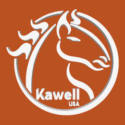Farriers and vets are sometimes more concerned with the horse’s front feet. If the hind feet are unshod or overlooked, there are some common pathologies that can negatively affect the structures of the hind foot and potentially the whole horse.
This article anatomically illustrates a specific hind foot conformation and the common pathology associated with it. This conformation usually occurs in horses that toe out and “stand under.”


The morphology associated with this conformation is typified by a strong arch in the toe and a weak or collapsed arch in the heel. The bottom of this right hind foot (Figure 1) shows some outward signs of pathologies within.
We can see rounding of the sole and separation of white line tissue in the lateral heel area. These indicate a descending movement of the lateral heel’s arch. After trimming the hoof capsule to a horizontal plane and removing the hoof wall, the sole’s vertical depth appears slightly thicker and darker in the lateral heel area, indicating stress in this area causing the white line to increase in its vertical depth followed by decreases in the vertical depth of the sensitive lamina (Figure 2).
When the sensitive structures are removed, the pathology to the sole body becomes more evident. It is obvious that the bone position on the sole influences developing pathology to both the sole body and the 3rd phalanx.


Figure 3 indicates that the rounding of the sole and separation at the white line we observed on the bottom of the foot (Figure 1) is indeed caused by crushing or collapse of the arch in the heel area. This pathology is commonly referred to as a “dropped sole.” The collapsed heel arch in conjunction with a strong toe arch also produces a negative palmar angle. The crushing in this area has caused enough stress to make the sole remodel around the P3 bone (Figure 4) This causes damage to the top of the sole, sole dermis and the P3 bone, because as the bone presses into the sole it deteriorates and becomes rounded under the palmar process (Figures 5 and 6).


This foot’s solar view also shows a flattening of the sole in the midsection which indicates crushing to the internal sole body (Figure 1). This is very common in this hind foot conformation and in this case is linked to the crushing of the heel arch creating a negatively planed P3 bone (Figure 7). Body weight and exercise place additional force on this area and may cause severe soft tissue damage to the sole body, dermas and sensitive lamina of the bar and can be seen clearly in Figures 7 and 8.


Hoof conformation plays a fundamental role in creating pathology in the foot, and when combined with bodyweight and exercise, can produce both soft tissue damage and bone remodeling.
This example illustrates a typical hind foot with a strong toe arch and a weak, collapsing heel arch. The pathology produced by this type of internal morphology can include soft tissue damage to the top of the sole, dermas and sensitive lamina, as well as P3 remodeling.






